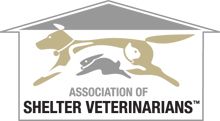Shelter Snapshot: Playing the name game
Shakespeare told us that a rose by any other name would smell as sweet, but is that true for animal shelters? Find out what a shelter's name or its descriptors tell us about its services and the animals that it helps.

"You can call me whatever you like. I just want a home." (Shutterstock.com)Specialty fields frequently develop their own terminology, which is useful for enhancing communication between colleagues, improving precision of meaning and, ultimately, helping to advance the field of study. However, for those not immersed in that particular field, keeping up with these locutions can be challenging.
As one of the newest veterinary specialties, shelter medicine is replete with its own terminology, which is created, changed, favored and discarded by animal welfare advocates constantly. Although it can be difficult to stay up-to-date with the lingo, a working understanding of basic sheltering terminology is important. It can help you understand what needs a particular shelter might have, which may help you tailor your health and welfare recommendations in an efficient and appropriate manner.
What is a shelter?
The Association of Shelter Veterinarians' Guidelines for Standards of Care in Animal Shelters submits a broad definition of shelter, intending for the word to apply to:
“…traditional open-admission shelters; care-for-life sanctuaries and hospices; home-based rescue and foster-care networks; virtual internet-based animal transport programs; behavioral rehabilitation centers; limited- or planned-admission shelters; no-kill or adoption-guarantee shelters; high-volume adoption agencies; and many permutations of these various approaches.”1
Although there can be considerable overlap, animal shelters are commonly categorized by function, mission, or even their source of funding-some are municipal facilities funded through local taxes, some are private organizations funded through donations, and others may be a combination of the two. The variation in shelter terminology is due to the lack of oversight or regulation of shelter operations and a lack of standardization in programming and services provided.
Commonly, holding periods for stray animals and animals suspected of being infected with rabies, as well as guidelines regarding euthanasia practices, are stipulated by local or state laws and regulations. Outside of these select practices and animal cruelty statutes, there are no regulations pertaining to animal sheltering at the local, state or federal level. Similarly, other than select states that require inspection of rabies quarantine areas or general housing, there are no required inspections of animal sheltering facilities.
Nearly any individual or group can create its own sheltering organization, and the establishment of a recognized nonprofit organization does not imply anything about the services offered or its animal care practices. Similarly, large, national, nongovernmental animal welfare organizations are independent and do not have oversight over or responsibility for similarly named local or regional organizations. That is, the American Society for the Prevention of Cruelty to Animals (ASPCA) has no affiliation with any other Society for the Prevention of Cruelty to Animals (SPCA), and the Humane Society of the United States has no affiliation with any other humane society.2
Shelter lingo
As described by the Association of Shelter Veterinarians,3 here is a review of some of the names and descriptors animal shelters use.
Adoption guarantee
A variety of operational policies are practiced by adoption-guarantee shelters. This terminology could indicate that all animals entering a sheltering program will remain there until adoption, only animals determined to be medically or behaviorally healthy will be eligible for adoption, or only animals for which an adoption can be guaranteed are admitted. Actual admission, adoption or euthanasia policies and practices may vary between adoption-guarantee organizations. In most cases, adoption-guarantee organizations are limited admission and privately funded.
Animal control
These facilities are typically government operated at the local level to serve the primary purposes of housing stray animals, enforcing animal ordinances, and controlling the spread of rabies. Many also operate lost-and-found services and run animal adoption programs. Historically, these facilities have been called pounds, and their primary purpose was public health protection through the picking up of stray dogs. Private organizations may hold animal control contracts with municipalities.
Animal sanctuary
Typically, organizations operating as sanctuaries are private organizations intended to provide long-term animal housing. They may be limited to a particular species, breed or physical or behavioral condition. In many cases, sanctuary animals have physical or behavioral needs that would hinder their adoption into a private home.
High-, low- or no-kill shelter
This terminology was historically used to describe the euthanasia practices of a particular sheltering organization, whether publicly or privately funded. However, standard definitions of these terms do not exist, their interpretation is subjective, they are often seen as divisive, and actual euthanasia practices cannot be reliably inferred from their use.
Limited admission
Limited-admission shelters create criteria for admission in accordance with their resources and mission. This term typically refers to private organizations that have no legal obligation to admit animals. Limited-admission shelters can also use managed-admission policies to guide animal intake operations.
Managed admission
As the name implies, managed admission indicates that animals are admitted under certain conditions. The term describes how the intake process is conducted, not the type of animals that are admitted. Typically, intakes are scheduled by appointment as space and resources can accommodate. Individual shelters may impose managed-admission policies on relinquished animals and maintain open-admission policies for strays or animals seized in cruelty investigations.
Organizations that abide by such policies are typically described as practicing managed admission when they are publicly funded and practicing limited admission when they are privately funded.
Open admission
This term typically indicates the sheltering organization will take in all animals, whether stray, relinquished by an owner, seized as part of a cruelty investigation, or otherwise. Increasingly in practice, these admissions are restricted by specific criteria like municipal jurisdiction or hours of operation.
Some open-admission organizations may only admit animals falling under their legal or operational missions. For example, cats are often excluded from stray animal ordinances, and open-admission shelters in such jurisdictions may not be required to provide services to these animals. Similarly, legal mandates seldom require shelters to admit relinquished pets, though they often voluntarily serve this function. In these cases, open-admission shelters may accept all stray animals but not relinquished pets.
Open admission may refer to either public or privately funded organizations. Being open admission does not preclude the use of managed-admission policies, which describe how the admission process itself is conducted (see “Managed admission” above).
Rescue group
These organizations are found in a variety of sizes and forms and often include a network of volunteer foster homes. While some rescue groups offer services to a wide variety of animals, many are limited to particular species or breeds and often source animals from other sheltering organizations. Rescue groups are generally privately funded, have active adoption programs, and may or may not have a standing facility.
Traditional animal shelter
These organizations typically represent a public-private partnership. They often perform the functions associated with animal control (under contract with local municipalities) as well as have robust adoption programs and community service initiatives. Frequently, these shelters are referred to as the humane society or SPCA-it may even be part of their name-though they have no formal affiliation with the national organizations.
Conclusion
Despite many confusing and overlapping terms, some distinctions can be seen in the various ways animal sheltering organizations are named and described. There are many other combinations of function, mission and funding sources that have not been described here. As the field of animal sheltering advances, additional innovative arrangements-and accompanying terms-are sure to emerge as we seek to enhance our efforts to protect the health and welfare of homeless animals throughout the world.
References
1. The Association of Shelter Veterinarians. Guidelines for standards of care in animal shelters. Available at: http://www.sheltervet.org/assets/docs/shelter-standards-oct2011-wforward.pdf. Accessed Feb 7, 2018.
2. Hurley KF, Miller L. Introduction to disease management in animal shelters. In: Infectious disease management in animal shelters. Ames, Iowa: Wiley-Blackwell, 2009;1-16.
3. Association of Shelter Veterinarians. Shelter terminology. Available at: http://www.sheltervet.org/assets/PDFs/shelter%20terminology.pdf. Accessed Feb 12, 2018.

"Shelter Snapshot" is a collaborative column between the Association of Shelter Veterinarians (ASV) and dvm360.com to help inform veterinarians and team members involved in veterinary shelter medicine and in related aspects of veterinary general practice. To learn more about the ASV and to find more information on these and other animal sheltering terms, visit sheltervet.org.
Brian A. DiGangi, DVM, MS, DABVP (canine & feline practice, shelter medicine practice) is a past president of the Association of Shelter Veterinarians and is a senior director of shelter medicine for the American Society of Prevention of Cruelty to Animals.